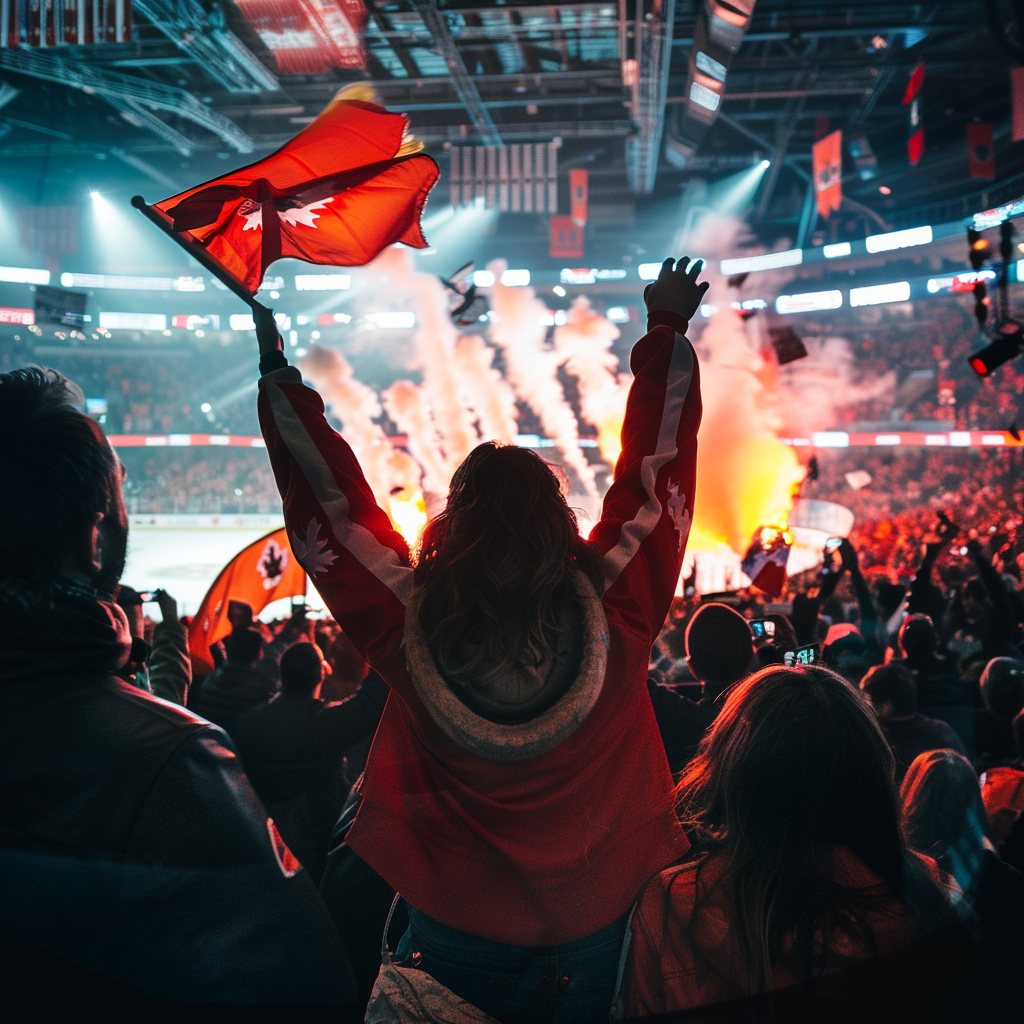
Fan culture in the world of hockey plays a key role in shaping the stadium atmosphere, inspiring players and uniting fans around the world. From symbols and traditions to songs and rituals, fan culture permeates every aspect of a hockey game, creating a unique atmosphere and giving the game an emotional charge.
Traditions of hockey fans
The traditions of hockey fans represent a rich complex of customs, symbols and rituals that add a unique flavor to the atmosphere of hockey matches.Their origins go back a long way and often become an integral part of a team’s cultural heritage.
History and development of traditions:Fan traditions often have deep historical roots related to the formation and development of the team itself. Some traditions may be associated with specific historical events or significant victories, while others may be symbolic, reflecting the characteristics of the city or region from which the team originates.
Team identification symbols and signs:Fans often use their team’s symbols and identification to express affiliation and support. These can be logos, colors, mascots or other unique elements that become unofficial fan emblems.
Significant rites and rituals: Rituals and rituals play an important role in creating community among fans. These can be traditional mottos, dances, round dances, as well as specific rituals before the game or during breaks. These rituals strengthen the sense of belonging to the team and create unity among fans.
Flags and banners
Flags and banners play an important role in hockey fan culture, being not only symbols of support for the team, but also a way of expressing individuality and belonging to the fan community. They often feature a variety of graphics, slogans, or team-specific symbols.
The meaning of flags in fan culture: Flags in hockey fan culture are a powerful means of communication and self-expression. They can be used to support the team, convey messages or even coordinate activities in the stands. Flags also help create a visual atmosphere in a stadium and enhance the emotional impact of fans on players and referees.
Types of flags and their symbols: Flags in hockey fan culture come in a variety of shapes and sizes, including standard national flags, flags with team logos, and banners with images of players or phrases of support. Each flag can carry its own symbolic meaning, reflecting the values, traditions or history of the team.
The role of banners and banners in supporting the team: Banners and banners are often used by fans to create visual effects in the stadium. They can be deployed during important moments of the game, such as a goal or winning moment, to highlight the emotional reaction of the fans and increase pressure on the opponent.
Songs and round dances
Songs and dances are an integral part of fan culture in the world of hockey, helping to create an atmosphere of unity and inspiration in stadiums.They are often performed by fans during matches, accompanying every action of the team and creating an emotional background for the game.
Songs in hockey fan culture can be varied – from traditional battle anthems to modern hits reinterpreted with hockey themes. They play an important role in maintaining energy and interaction with players, as well as helping to shape the identity of the fan community.
Psychological effect of fan support
- Moral support: Fan support plays an important role in boosting the team’s morale. The sounds and chants of fans can motivate players, increasing their confidence and energy on the field.
- Creating an atmosphere of success: The atmosphere created by fans can influence the psychological state of both players and opponents. Emotional support from the stands can create a sense of self-confidence for the home team and pressure for the visiting team.
- The effect of collective excitement: When many people express their emotions at the same time, it creates an effect of collective excitement that can be contagious and affect the atmosphere of the entire match.
Influence of fans on decisions of referees and players
- Putting pressure on referees: The intensity of fan support can put pressure on referees and influence their decisions during the game. Noise and chanting from the stands can affect the perception of referees and increase the likelihood of refereeing errors.
- Team support: Fans can influence players’ decisions by providing moral support and boosting their confidence. In response to the emotional impact of fans, players may exhibit higher levels of motivation and aggressiveness in the game.
- Show of discontent: Fans may also express their dissatisfaction with decisions of referees or players, which can affect the atmosphere in the stadium and create tension around the match. Unfair decisions or game situations can cause emotional reactions in fans and affect the course of the game.
Fan culture in the world of hockey plays an undeniable role in shaping the atmosphere in stadiums and influencing the course of the game. Traditions, rituals, flags and songs create a unique flavor of each match, uniting fans and supporting teams. The influence of fan culture extends not only to the emotional background of the game, but also to the psychological state of the players, the decisions of the referees and the general atmosphere in the stadium. Therefore, studying and understanding fan culture is important not only for the game itself, but also for cultural heritage and social interaction.
Fan culture contributes significantly to the emotional atmosphere in stadiums, motivates players and generates public support for teams.
Fan support can create pressure on referees, influence the emotional state of players and even influence the decisions of referees during a match.
